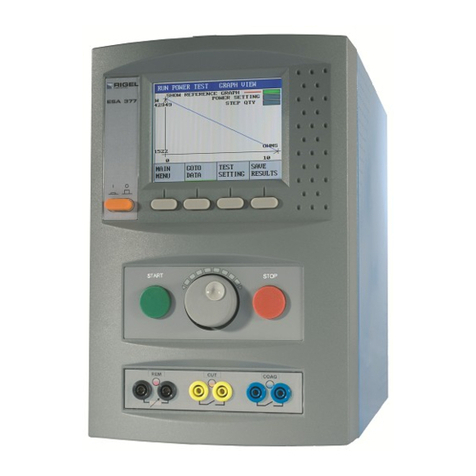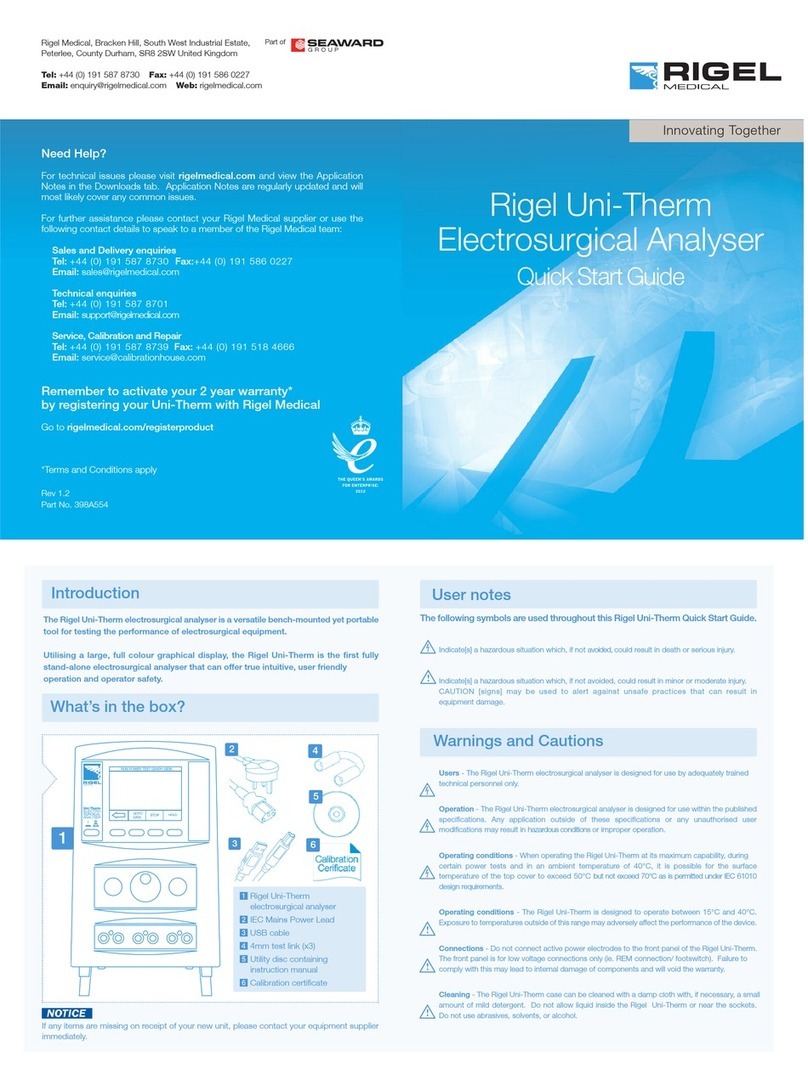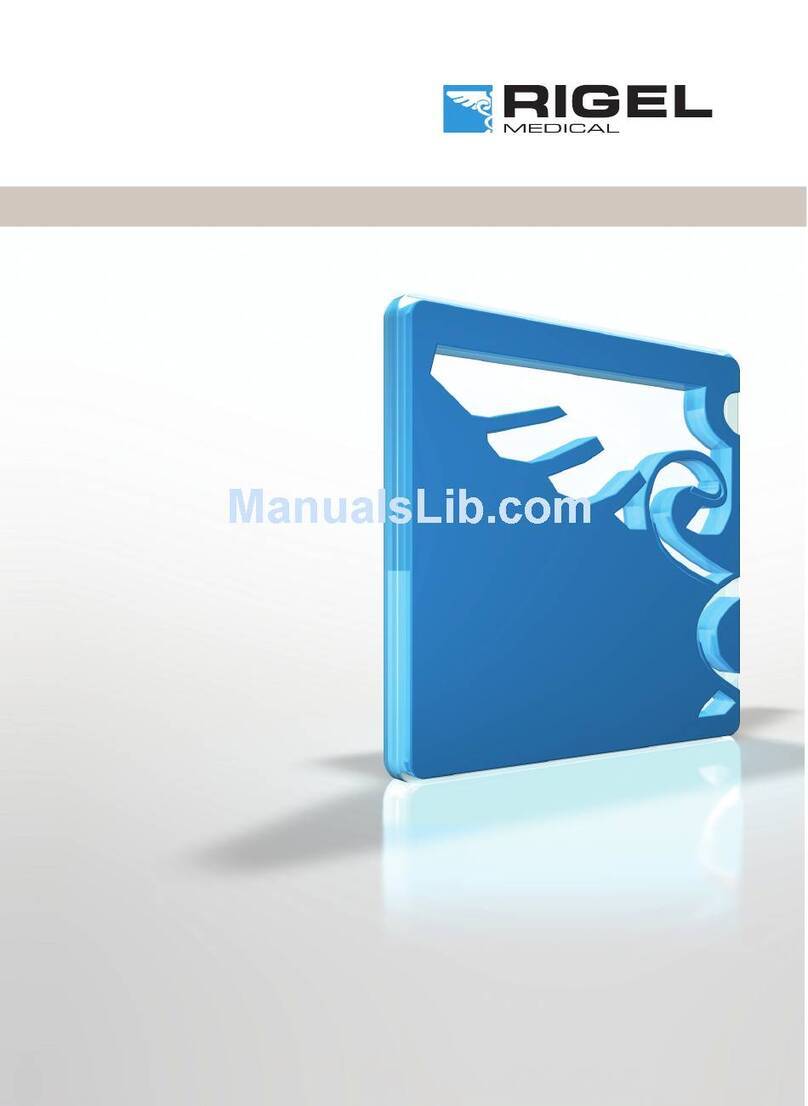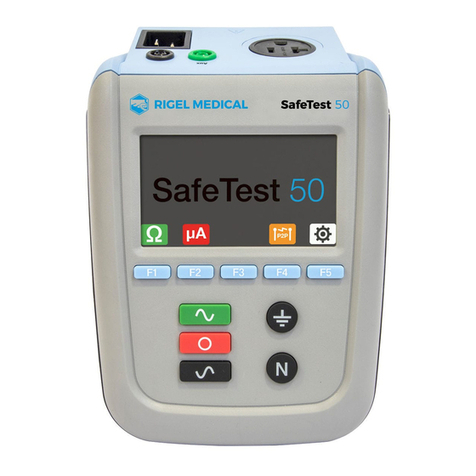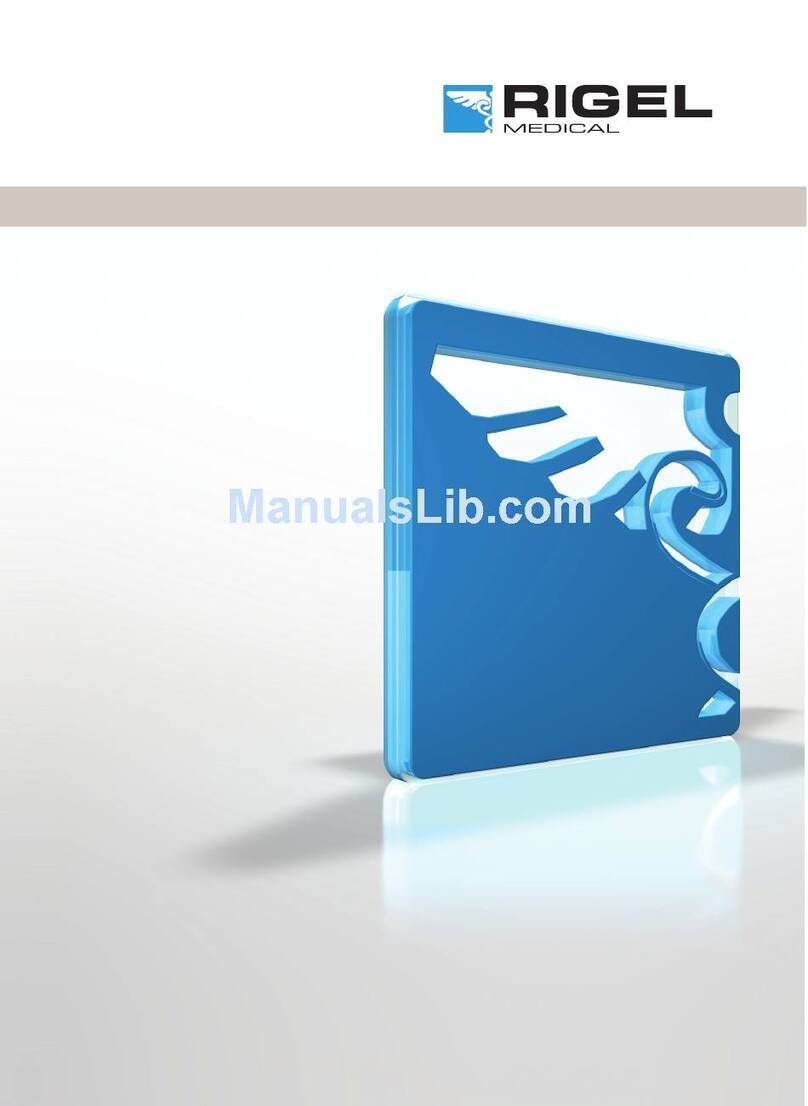Rigel 288 plus Instruction Manual –Revision 1.15
5.14. Patient Leakage –F-Type ___________________________________________ - 48 -
5.15. Patient Auxiliary Current ___________________________________________ - 49 -
5.16. Load Test ________________________________________________________ - 50 -
5.17. IEC Lead _________________________________________________________ - 51 -
6. Customising your tester __________________________________________ - 53 -
6.1. Test Sequences ___________________________________________________ - 53 -
6.1.1. User definable tests _________________________________________________ - 54 -
6.1.2. View, Delete or Copy an existing Test Routine._________________________ - 54 -
6.1.3. Modifying (Edit) Existing Test Sequences______________________________ - 55 -
6.1.4. Edit individual Test__________________________________________________ - 57 -
6.1.5. Insert an individual safety test ________________________________________ - 58 -
6.1.6. Insert a non-electrical safety test______________________________________ - 59 -
6.1.7. Create a new Test Sequence_________________________________________ - 62 -
6.2. Test Codes _______________________________________________________ - 64 -
6.2.1. Create New Test Codes _____________________________________________ - 64 -
6.2.2. Configuring the Applied Part Module __________________________________ - 66 -
6.3. Asset Trace Variables ______________________________________________ - 69 -
6.4. System Config ____________________________________________________ - 70 -
6.4.1. Asset ID ___________________________________________________________ - 71 -
6.4.2. After Test __________________________________________________________ - 71 -
6.4.3. Comments _________________________________________________________ - 72 -
6.4.4. Applied Part Results ________________________________________________ - 72 -
6.4.5. Language__________________________________________________________ - 72 -
6.4.6. Check IEC lead Polarity _____________________________________________ - 72 -
6.4.7. Date / Time ________________________________________________________ - 73 -
6.5. Blue Tooth Favourites______________________________________________ - 73 -
6.6. User Admin ______________________________________________________ - 77 -
6.6.1. Preferences ________________________________________________________ - 78 -
6.6.2. Change User _______________________________________________________ - 79 -
6.6.3. Change Password __________________________________________________ - 79 -
6.6.4. User Profile ________________________________________________________ - 80 -
6.7. Memory options __________________________________________________ - 80 -
6.8. Restore Factory Settings ____________________________________________ - 81 -
7. View Data _____________________________________________________ - 83 -
7.1. View Results _____________________________________________________ - 84 -
7.2. Search the database _______________________________________________ - 85 -
7.3. View Data Options ________________________________________________ - 86 -
8. Data Transfer __________________________________________________ - 87 -
8.1. Download to PC___________________________________________________ - 87 -
8.2. Upload from PC ___________________________________________________ - 89 -
8.3. Configuration Data ________________________________________________ - 89 -
8.3.1. Send Config Data___________________________________________________ - 89 -
8.3.2. Receive Config Data ________________________________________________ - 91 -
8.4. Clone Data _______________________________________________________ - 92 -












